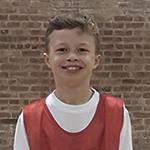Looking over the frames pictured on the preceding four pages, it is clear there is a sales incentive for optical practices to accommodate children within their products and services. However, it is not necessarily the most straightforward thing to do.
‘Most opticians start to see children in practice from the age of six either after school or at the weekends,’ says Simon Small, practice director at Boots Opticians Balham. ‘In smaller practices this can be quite a traumatic time for staff and other patients as one child having their eye test will often bring siblings along too. Practices become playgrounds and other patients are often ousted or deterred by the disruption.’
A dedicated and maintained play area is one way around these, although this means giving up valuable floor space. If you can manage to get the kids on board though the rewards can be substantial.
‘Children are a very effective means of engaging with the whole family,’ says Katie Harrop, No7 Contact Lenses professional services manager. ‘Many of our partner practices find that while some adults will not think of visiting an independent for their own visual needs, they are more inclined to seek specialist advice for their children. This, in turn, draws them to see the value that many independent practices can offer. The patronage of parents is very important as word of mouth recommendations soon spread.’
Small agrees, adding that the 'conversion rate for children’s eye tests has remained strong as patients are far less likely to go elsewhere or use the internet. Also as children tend to be a little more heavy handed, opticians are more likely to get interim dispenses both privately and on the NHS repair system.'
The transition to adulthood may see patient retention fall.
‘There may be some drop off as teenagers head off into the world, or to university, but many will retain their allegiance to the practice,’ says Harrop. ‘Others may well try another optician while they are away but it is reassuring how good service can bring them back in the long run.’
Pursuing hoop dreams with Ortho-k

Abandoning your glasses is not the normal advice from optical practices, but it has helped to land 11-year-old Louis Cottrell, a place in the national junior basketball squad.
Louis has been wearing spectacles since he was seven. Sport is a passion for the Cardiff-based youngster, but he has been hindered by the need for prescription sports goggles. Optometrist Ian Chalmers suggested trying Ortho-k.
Ortho-k involves wearing tailor-made contact lenses at night which are produced for each patient following topographical maps of the cornea. Overnight the lenses gently flatten the cornea allowing corrected vision for the day ahead.
‘Now I can now see perfectly well without my glasses,’ says Cottrell ‘I play loads of sport and the goggles were really irritating to wear – now I am just like my friends. The trial for the Wales national squad basketball team was a few days after I started using Ortho-k and the vision it gave me really helped – I am so thrilled to have a place in the squad.’
‘I was a bit nervous about the lenses but it was easy to put them in and I always have a good night’s sleep as they don’t irritate. The first time I wore them I could see perfectly well the next day. My basketball and football coaches were really surprised when I didn’t turn up in my goggles.’
Chalmers explains his motivation for suggesting the treatment.
‘Myopia in children has doubled in the past 50 years and children are becoming myopic at a younger age. If youngsters have myopic parents, as Louis does, there is an increased likelihood that the child will be affected. We know that myopia can lead to vision problems in later life so it is wise to try to arrest this progression if we can, and this is what Ortho-k seems to do. I believe I have a duty of care to tell patients about the treatment.’
